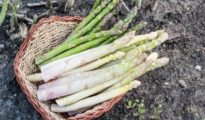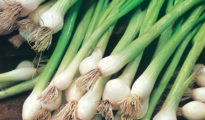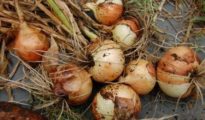If you like to grow your own vegetables, then tomatoes are probably at the top of your list. The big question is though, should you prune your tomato plants, and if so, how should you do it? We'll show you how to prune tomato plants for maximum yield and also why you should prune them so you have a better understanding.
Pruning tomato plants is actually an optional technique. Some gardeners swear by it, while others choose not to do it. One very important thing to keep in mind though, is the variety of tomato you're growing – this will determine whether or not you should prune your tomato plants. You should only prune indeterminate varieties. These produce new leaves and flowers constantly throughout the growing season. Determinate varieties, on the other hand, should not be pruned, as you may reduce their yield. Let's take a quick look at what the difference between determinate and indeterminate varieties is.
Indeterminate Tomato Varieties: DO Prune
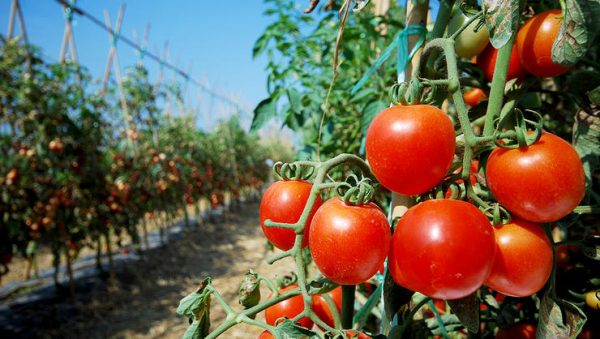
Simply put, indeterminate tomato varieties will continue to produce fruit all throughout the growing season. This means that they will continuously throw off shoots, which need to be pruned for maximum growth and health. Additionally, indeterminate varieties will also need a trellis or some sort of support.
Do I Have to Prune My Tomato Plant?
No, you do not have to prune your tomato plant, regardless of whether or not it's indeterminate. Pruning tomato plants is completely up to each and every gardener. Pruning an indeterminate plant though will give you a higher yield, and so most gardeners prefer to do so.
Indeterminate Tomato Varieties:
Indeterminate tomato varieties grow as vines, and will therefore produce much more fruit. Because of this, these tomato varieties will need support in the form of a trellis or a stake. Here are some indeterminate tomato varieties you can grow:
- Early producers: Early Cascade, Early Girl, and Quick Pick
- Beefsteak: Beefmaster, Supersteak, and Delicious
- Cherry tomatoes: Super Sweet 100, Sweet Million, and Yellow Pear
- Unusual varieties: Yellow Stuffer, Long Keeper, White Wonder, Evergreen, and Brandywine
Determinate Tomato Varieties: Do NOT Prune
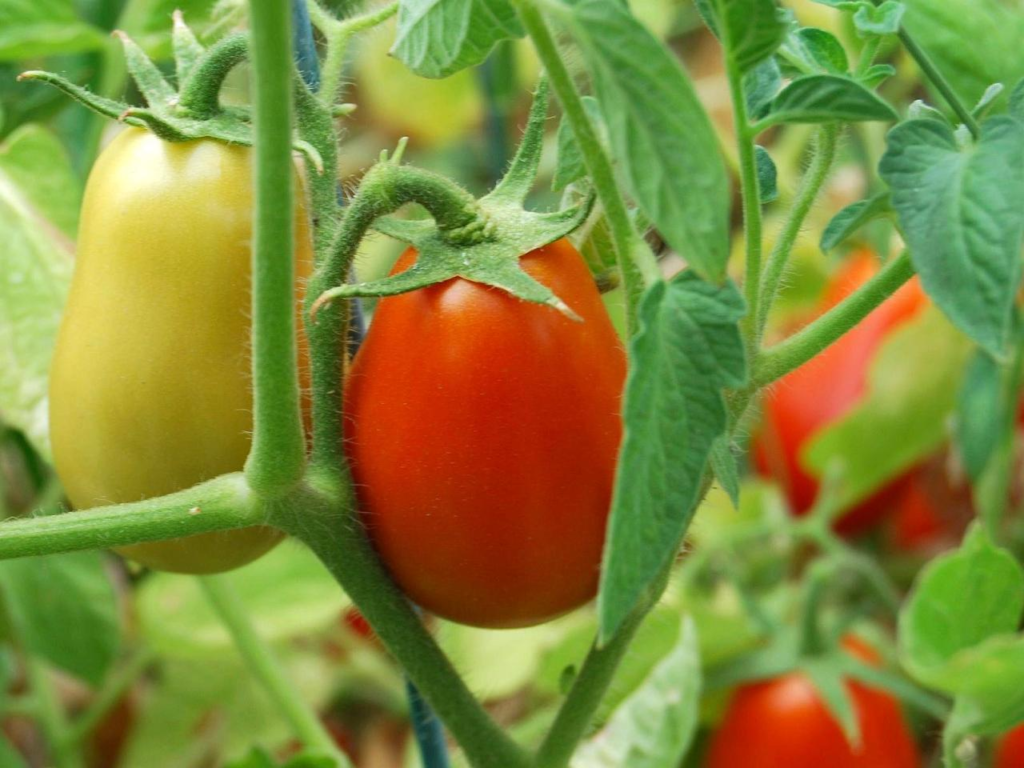
Determinate tomato varieties will reach a certain point and then stop growing altogether. These varieties will mature within a month or two, all at once, and usually grow at the end of the branch. These varieties are great for gardeners who like to use their tomato harvest for canning, making sauces, or maybe because they simply don't have the time to tend to their garden. Determinate tomato varieties also include bush tomatoes.
Determinate Tomato Varieties:
These tomato varieties will give off fruit all at once and do not need to be pruned. Here are some varieties you can grow:
- Early season: Glacier, Bush Early Girl, and Legend
- Main season: Celebrity, Floramerica, Kootenai, New Big Dwarf, and Siletz
- Paste types: Roma, Principe Borghese, Viva Italia, and San Marzano
- Dwarf tomatoes: Small Fry, Cherry Grande, Koralik, Elfin, Patio, and Better Bush
So now that you know the difference between indeterminate and determinate tomato varieties, it's time to get down to business: how to prune tomato plants…indeterminate ones only!
How to Prune Tomato Plants
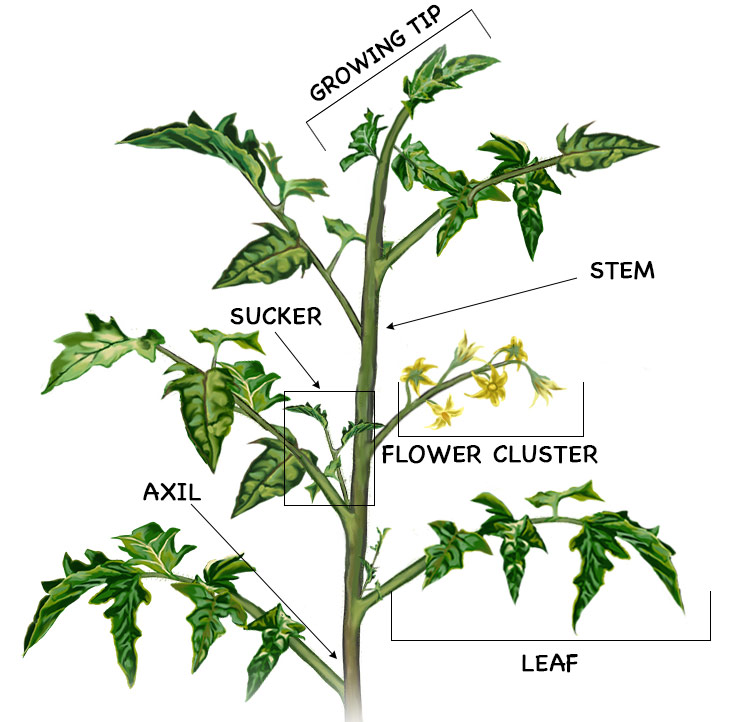
If you're growing indeterminate tomato varieties, you'll want to prune them all throughout the growing season. Let's start at the beginning!
How to Prune Tomatoes at Planting:
- Start by removing any lower leaves before planting so that you can bury the plant deep into the soil.
- If there are any flowers on the plant, remove them. Leaving them on will take the energy away from the leaves, slowing fruit production and growth.
Early/Mid Season Pruning:
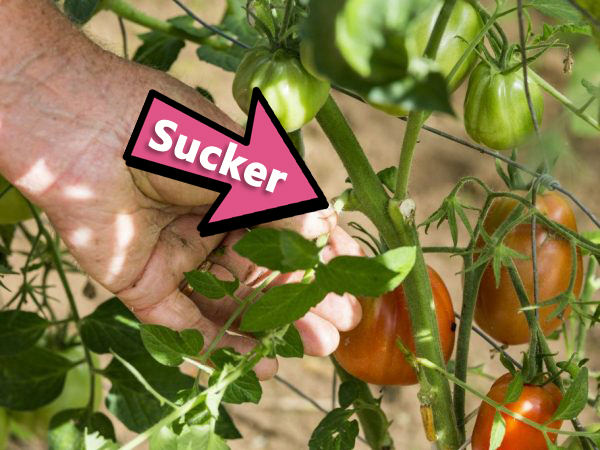
- Keep removing any flowers you see until the tomato plants are about 12 to 18 inches in height. Doing this will ensure that the energy goes to the roots and leaves.
- Remove any and all leafy suckers (see image above). These are usually located beneath the first fruit cluster. Doing this will speed up growth. Leafy suckers are the little shoots that form where the leaf stem attaches to the main growing stem.
- Warm Regions: If you live in a warm climate, we suggest you practice “Missouri pruning”. This is where you pinch off the leaflets at the end of each sucker and leave only two base leaflets in place. Those leaflets will eventually get bigger and protect the tomatoes from the sun's burning rays.
- Colder Regions: If you live in northern regions, where the weather isn't too hot, you can remove the sucker in its enterity.
- For best results, remove suckers when they're small, so you can pinch them with your fingers and not damage the plant. If you have to cut them, do so with a sharp knife and make the cut as close as possible to the stem.
Late Season Pruning:
- Speed up tomato ripening late in the season by removing the tip of each main stem. Do this about four weeks before the first expected fall frost date.
- This type of pruning is called “topping” and it causes the plant to stop flowering and fruiting and directs all energy to the remaining fruit.
- Doing this will ensure that the fruit will ripen faster, even if you harvest while green. There are higher chances your tomato will turn red.
How to Prune Plants That Are Already Grown
If you already have tomato plants (this goes for both determinate and indeterminate varieties) that are grown, you can still prune the bottom lower leaves. It's important to prune to leaves on the lower bottom so they do not touch the soil. Leaves that touch the soil could spread disease the the tomato plant.
As your tomato plant gets bigger, you can continue to remove any leaves up to 18 inches from the ground. To avoid spreading disease, prune the leaves when they are dry.
For tomato plants that are grown in cages, you can also prune the leaves at the center of the plant. This will give them better airflow which can also prevent disease from spreading. Be sure not to remove any leaves near fruit clusters though. Expert say that those leaves are the ones that send sugar to the fruit, so be sure to leave those intact.
How to Plant Tomatoes:
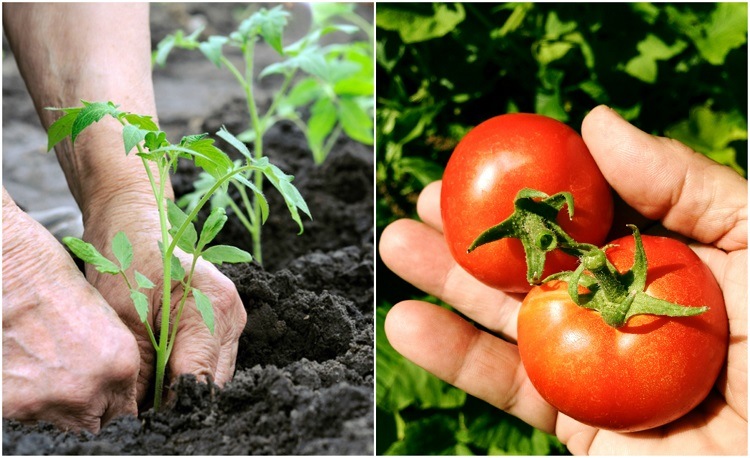
For best results, plant tomatoes in rich, well draining soil. We recommend you grow tomatoes in pots or in raised beds to prevent the spreading of diseases and to discourage pests. Feed your tomato plants regularly with fertilizer. Depending on the variety of tomato you're growing, they'll need different types of fertilizer, so be sure to read the package instructions.
Like this post? Don't forget to share, Pin, and comment below 🙂


